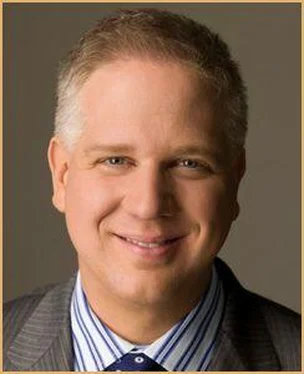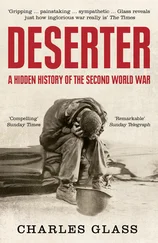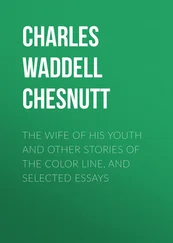Now he would use the same strategy—a singular focus on safety—to destroy Westinghouse.
He began to compose a letter back to Southwick, the dentist.
The best appliance for humane execution is one that will perform its work in the shortest space of time, and inflict the least amount of suffering upon its victim. This I believe can be accomplished by the use of electricity and the most suitable apparatus for the purpose is that class of dynamo-electric machine which employs intermittent currents.
The most effective of these are known as “alternating machines,” manufactured principally in this country by Mr. Geo. Westinghouse, Pittsburgh.
Pittsburgh, Pennsylvania
June 1888
Westinghouse seethed. He read aloud the line again. “Just as certain as death, Westinghouse will kill a customer within 6 months after he puts in a system of any size.”
Nikola Tesla stood very still, his hands folded in front of him. “He wrote that to the president of Edison Electric with full knowledge that the prediction would get whispered around until it became public.”
Westinghouse threw the newspaper onto his desk. “Edison’s trying to paint me as a killer.”
“Precisely,” Tesla said.
“Why is he using such underhanded tactics?” Westinghouse asked. “Why not just come out and say it directly? It’s not as though he doesn’t have access to the newspapers.”
Tesla moved his arms and re-clasped his hands behind his back. “He is wrong about alternating current . . . and at some level he knows it. He’s afraid his preeminence will fade.” He shook his head. “I warned him about this years ago.”
“Nikola, do you have advice for me?”
“Do not underestimate Tom Edison. He’s clever, and he has a knack for grabbing headlines. He used a thousand-volt Westinghouse generator to kill dogs, horses, and even cows. It is impious, but he claims he is researching the relative dangers of direct and alternating current. He says his only interest is in protecting the public, especially children.”
“I meant advice on what action to take,” Westinghouse said, with more irritation than he’d intended.
“You must defend alternating current. You must be its champion. Call reporters and tell them our side of the story. The newspapers sensationalize human deaths from alternating current, but they’ve all occurred from obsolete outdoor arc lighting. There has never been a death associated with Westinghouse Electric.”
“Except for dogs!”
“Mr. Westinghouse, I understand your disgust with what he is doing to animals, but he will not stop there. There are rumors he is helping New York State use electricity for capital punishment.” Tesla paused for dramatic effect. “He intends to use alternating current.”
Westinghouse paced his office. Edison had started this damn war between direct and alternating current and there was no need for it. There was enough business for both of them. The whole world needed electricity.
He understood Edison’s desire to protect his investment; Westinghouse had a similar motivation. He had recently paid Tesla $60,000, plus royalties of $2.50 per horsepower of electrical capacity sold, to use his patents. Westinghouse had further invested in factories, salesmen, and research dedicated to alternating current. He and Edison both had a lot to protect—and Westinghouse had come a long way.
After only two years, Westinghouse had over half as many generating stations as Edison, but mostly in smaller markets. Edison had New York City; he had Buffalo. Westinghouse had commercialized alternating current so electricity would become more than an urban luxury, but now he needed to expand into those larger urban areas as well—which was one reason he had bid below cost to win New Orleans.
“Thank you, Nikola.”
That was a dismissal, but Tesla did not move. “What are you going to do?” he asked.
“I’m not going to fight this war in the press. Not yet anyway. Please give me some privacy so I can compose a letter.”
“You will not dissuade Edison with a letter.”
“Nikola, need I be rude?”
Tesla nodded gently and departed.
Westinghouse struggled with the proper tone for the letter to his nemesis. He decided the best approach was to pretend that Edison was not personally behind this seedy campaign. It would offer him a way out. They could both be disgusted that someone was trying to impugn the safety of something they’d each invested so much in.
I believe there has been a systemic attempt on the part of some people to do a great deal of mischief and create as great a difference as possible between the Edison Company and The Westinghouse Electric Co., when there ought to be an entirely different condition of affairs.
As he sealed the letter and flipped the envelope into his mailbox, Westinghouse realized that Tesla had once again been right. In all likelihood, Edison’s response would not come via letter, but instead via another headline in the newspaper. This vicious competition, Westinghouse understood, would not end with a letter or with a partnership; it would only end when one of them emerged as the clear victor.
This was to be a war.
West Orange, New Jersey
July 1888
“You wrote a fine letter,” Thomas Edison said, holding up the weeks-old newspaper so that Harold Brown could see it.
On June 5, Brown had sent a letter to the New York Post describing an accident where a boy had died after touching an exposed wire operating on alternating current. At the time, Brown had been a salesman for Brush Electric Company—basically a nobody in the electrical industry—but he had made such an effective argument against alternating current that Edison kept the newspaper on his desk to read aloud to any and all visitors.
“The only excuse for the use of the fatal alternating current,” Brown wrote, “is that it saves the company operating it from spending a larger sum of money for the heavier copper wires which are required by the safe incandescent systems. That is, the public must submit to constant danger from sudden death, in order that a corporation may pay a little larger dividend.”
The letter went on to recommend a new law to limit alternating current transmissions to 300 volts. This restriction would remove alternating current’s advantage of transmitting high voltage to customers who lived a good distance away from a power plant.
Shortly after the letter was published, Edison had secretly hired Brown and given him use of his lab so he could continue experimenting with electricity on animals.
“Thank you, sir,” said Brown, attempting to stifle a grin.
“I also want to compliment you on the demonstration at Columbia.”
Brown had proven himself to be a zealous executioner. Along with his assistant, Dr. Fred Peterson, Brown had demonstrated the lethal characteristics of alternating current at Columbia University by administering a series of 1,000-volt direct current shocks to a large Newfoundland dog. The dog writhed in agony but quickly recovered after the electric current was shut off. Brown finished the demonstration by killing the dog with an alternating current of only 330 volts. The raucous display in an academic setting had garnered national publicity.
“I apologize it didn’t go better. Some of the audience left in disgust.”
“Nonsense. That only made it bigger news. You and Dr. Peterson showed that direct current only induced pain but that alternating current killed, and at much lower voltage levels. The pain may be pitiful to inflict, but there is no permanent damage. I heard there was some heckling, but don’t let it worry you—it all added to the theater.” Edison chuckled. “I also heard that the Society for the Prevention of Cruelty to Animals won a reprieve for a second dog. Splendid.”
Читать дальше












